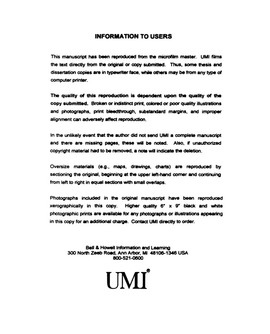| dc.contributor.advisor | Forgotson, James M., | en_US |
| dc.contributor.author | Polzin-french, Victoria, | en_US |
| dc.date.accessioned | 2013-08-16T12:30:53Z | |
| dc.date.available | 2013-08-16T12:30:53Z | |
| dc.date.issued | 2000 | en_US |
| dc.identifier.uri | https://hdl.handle.net/11244/5955 | |
| dc.description.abstract | Productive ramp crest facies form a series of vertically stacked shoal bodies that formed during the end of HFS I and occur only below HST I. Eustatic sea level changes and accommodation space within the HST resulting in laterally and vertically discontinuous facies controlled geometries of these stacked shoal, bodies. Geostatistical models of porosity and permeability attributes incorporated into a three-dimensional model have allowed for a greater understanding of the reservoir heterogeneity. This heterogeneity is not confined to the vertically and laterally discontinuous shoal bodies. Cycles defined within the reservoir have characteristic pore types that dominate from cycle-to-cycle, each exhibiting different petrophysical properties. In addition, diagenetic overprints have further compartmentalized the reservoir by changing original petrophysical properties through multiple periods of cementation and dissolution. Diagenetic events are also believed to be related to the chronostratigraphic framework established within HFS I and HFS II. This study will improve the ability to predict the distribution of reservoir shoal facies, their associated diagenesis, and the complexity of compartmentalization that can be expected within these reservoirs. This is an extremely valuable tool for application to all carbonate reservoirs deposited under similar environments along ramp platforms. | en_US |
| dc.description.abstract | The West Jordan unit produces from highly compartmentalized shoal facies that formed as a result of slight paleotopography on a gently dipping ramp. Productive shoal bodies developed within ramp crest facies tracts in an overall upward shallowing progradational sequence. Cycle boundaries defined within the unit mark chronostratigraphically significant surfaces that controlled deposition along platform areas. Two high frequency sequences (HFS I and HFS II) have been defined within the unit and each HFS culminates with a highstand systems tract (HST). Chronostratigraphic relationships were found to control porosity development and pore type distribution, diagenetic patterns of overprinting, and the geometric extent and degree of compartmentalization documented within productive shoal facies. Because these relationships occur within a chronostratigraphic architecture that has also been defined along outcrops in the Guadalupe Mountains, they can be extrapolated to other San Andres fields. Therefore, this study can be used as a predictive tool for better understanding where productive facies will occur within these reservoirs and the degree of compartmentalization that should be expected. | en_US |
| dc.format.extent | xix, 399 leaves : | en_US |
| dc.subject | Geology Statistical methods. | en_US |
| dc.subject | Carbonate reservoirs. | en_US |
| dc.subject | Geology. | en_US |
| dc.subject | Facies (Geology) | en_US |
| dc.title | Reservoir characterization and geostatistical modeling of the West Jordan unit San Andreas Formation, Central Basin Platform, Ector and Crane counties, west Texas. | en_US |
| dc.type | Thesis | en_US |
| dc.thesis.degree | Ph.D. | en_US |
| dc.thesis.degreeDiscipline | Conoco Phillips School of Geology and Geophysics | en_US |
| dc.note | Source: Dissertation Abstracts International, Volume: 61-03, Section: B, page: 1279. | en_US |
| dc.note | Adviser: James M. Forgotson. | en_US |
| ou.identifier | (UMI)AAI9964629 | en_US |
| ou.group | Mewbourne College of Earth and Energy::Conoco Phillips School of Geology and Geophysics | |
